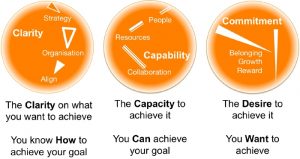— September 27, 2017

Pexels / Pixabay
The pressure is on for retail marketers to up the volume of emails they’re sending. This comes as no surprise, considering the ROI is huge (3800%, according to the Direct Marketing Association) and emails have been proven to boost revenue and drive awareness. However, with this power comes responsibility – and now marketers are faced with an even greater challenge of putting relevant, personalized and engaging content in a higher frequency of sends.
Today’s consumers can see right through thoughtless spam that says ‘marketing’ all over it. For retailers to get the most out of email marketing, they first need to address some of the shortcomings that earn them a spot in the ‘deleted’ folder. Executing a successful email marketing strategy starts at the planning phase, so let’s look at three common email calendar planning mistakes – and how to remedy them.
Taking a Merchant-Centric Approach
Email remains one of the most important digital communication channels – yet, only nine percent of marketers believe their emails are relevant, according to the Direct Marketing Association. To remain significant and competitive, marketers need to move away from serving up the same tired email campaigns time after time and instead prioritize what customers are interested in to build a balanced email ‘content diet’ for each recipient.
This means transforming the traditional batch-and-blast, one-size-fits-all approach to a customer-centric one that caters to the evolving tastes of each individual customer. To keep up with these constantly changing preferences, retailers need a variety of products and categories to keep them interested and engaged. Marketers should tap the treasure trove of customer data they have to tailor their email outreach to different types of customers and further segment and improve their email marketing strategy in the long-haul.
Relying on Discounts
Call it the Pavlovian conditioning of retail, but as consumers, discounts are something that we’ve not only come to love, but to expect. In our recent Coherent Path survey we found that 76 percent of retail marketers rely heavily on promotions in their email marketing campaigns. In fact, 55 percent of emails sent feature a promotion or discount in about half or more of their email campaigns. The moral of the story is, while it’s been a more popular strategy as of late, lower prices rarely lead to loyalty and can devalue a brand.
Long-term studies have shown that populations targeted with more personalized emails are much healthier when it comes to loyalty and engagement, so let that set your brand apart – not the price. One way retail marketers can beat their addiction to discounts is by understanding the customer journey. This can help in identifying and prioritizing the products your customers like most and are willing to buy at full price. With this information, marketers can then offer customers the products they actually want, when they want them instead of hoping to win them over with constant discounts.
Reinventing the Wheel
This may sound counter intuitive, but just because marketers shouldn’t rely solely on past plans doesn’t mean they should count them out completely. In fact, there are many marketers that aren’t reusing or re-purposing content strategically, which creates more work and leaves money on the table. Retailers invest large amounts of time and resources in developing a single email representing one product category only to never resend that email again.
As a consumer, think about all the promotional emails you receive daily. As a marketer, think about all the competition sitting in just one inbox. Don’t be discouraged by low open rates – rather, look at the click-through rates. If it’s high, even among a smaller audience, re-mail it. Leverage what you already have to extend the lifespan of every piece of content and maximize the revenue each asset brings in.
Planning a successful email marketing calendar is no easy feat, but as long as the customer is at the center of your strategy, it’s a step in the right direction. Avoiding these three common missteps can help marketers do that while improving brand perception and the bottom-line in the process.
Digital & Social Articles on Business 2 Community
(63)





